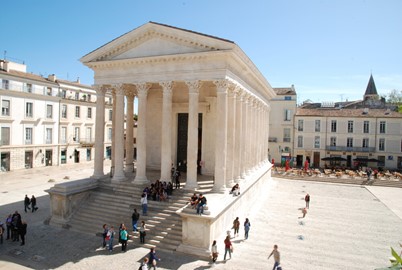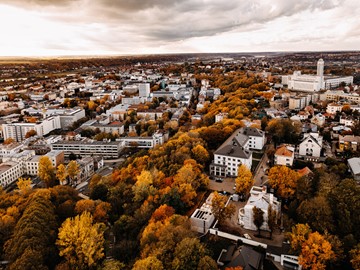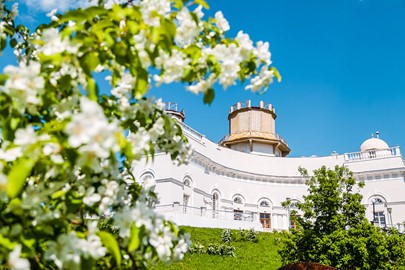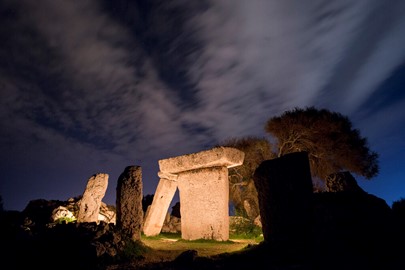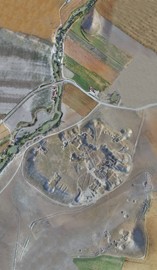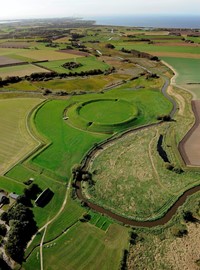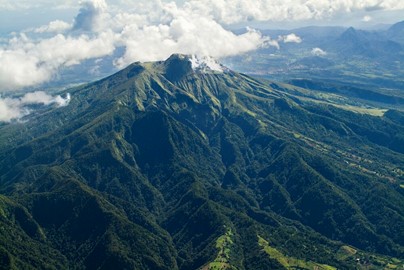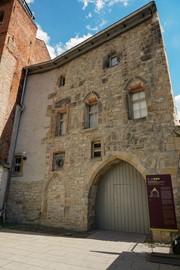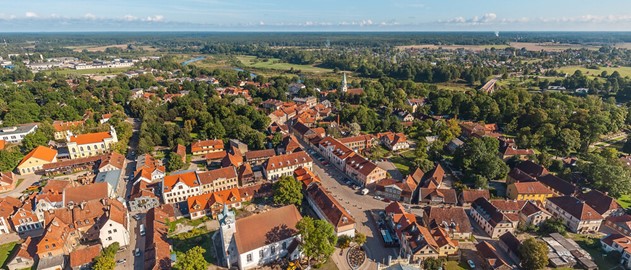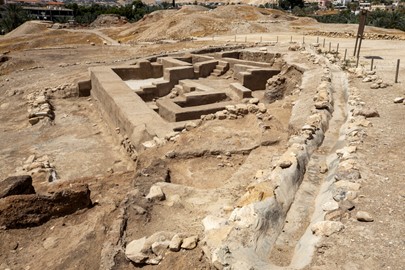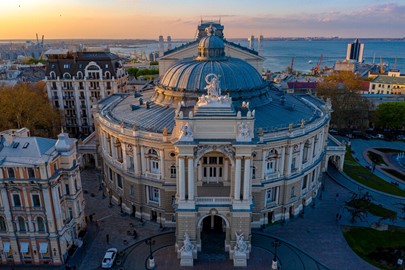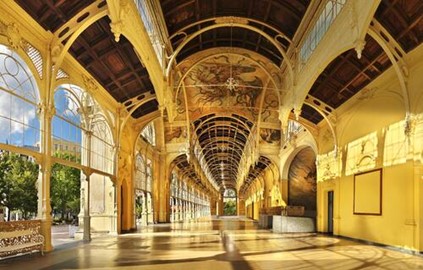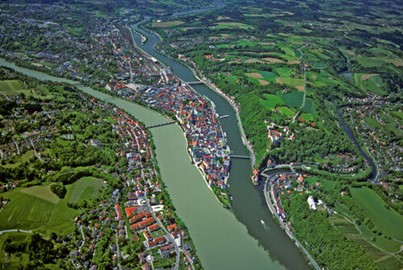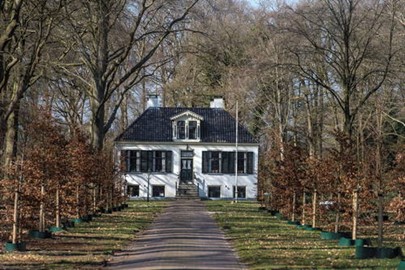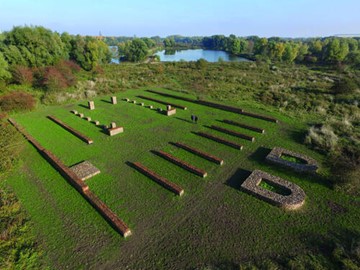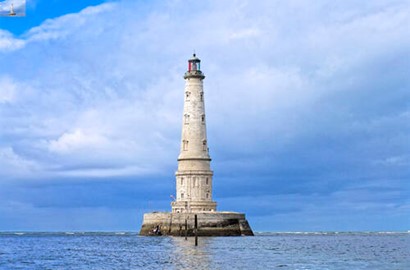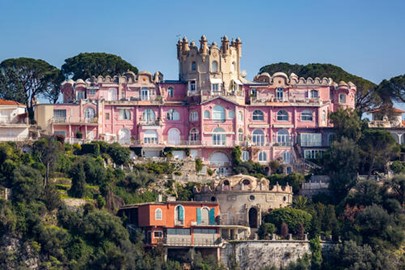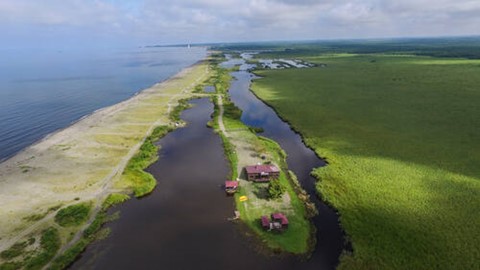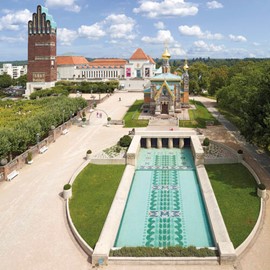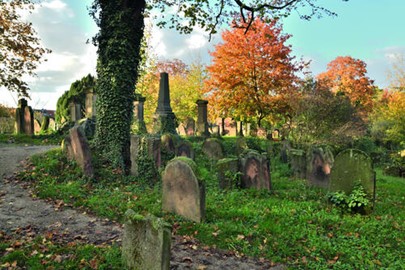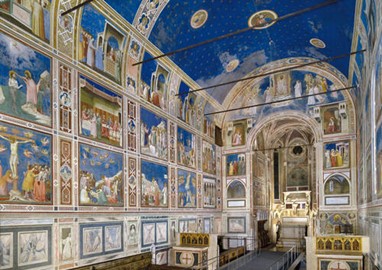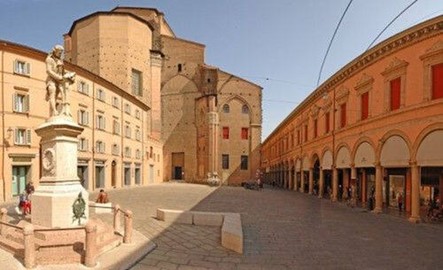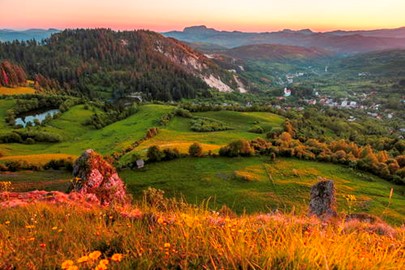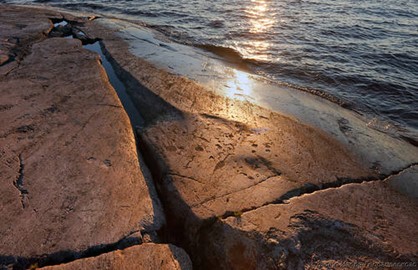region :: europe and north america
Maison Carrée of Nîmes
The Maison Carrée of Nîmes, a UNESCO World Heritage site in southern France inscribed in September 2023, is a remarkably preserved Roman temple completed around 7 CE during Augustus’s reign. Located in Nîmes, this 26-by-13-meter structure, built of local limestone with Corinthian columns, originally honored Gaius and Lucius Caesar and exemplifies early Imperial architecture with its perfect proportions and elevated podium. As France’s 50th UNESCO site and one of the world’s best-preserved Roman temples, it ... Read More
Modernist Kaunas
Modernist Kaunas, a UNESCO World Heritage site in Lithuania inscribed in September 2023, showcases the city’s interwar architecture from 1919 to 1939, when it served as the provisional capital after Vilnius’s occupation. Spanning Naujamiestis (New Town) and Žaliakalnis (Green Hill), this 455-hectare site features over 1,200 buildings blending Art Deco, functionalism, and local styles, reflecting rapid urbanization and national optimism. Recognized as Lithuania’s fifth UNESCO site, it includes landmarks like... Read More
Astronomical Observatories of Kazan Federal University
The Astronomical Observatories of Kazan Federal University, a UNESCO World Heritage site in the Russian Federation, consist of two historic facilities: the Kazan City Astronomical Observatory, built in 1837 on the university campus in central Kazan, and the suburban Engelhardt Astronomical Observatory, established in 1901, 24 kilometers west of the city. Recognized for their contributions to optical astronomy and astrophysics from the 19th and early 20th centuries, these well-preserved sites feature unique ... Read More
Talayotic Menorca
Talayotic Menorca, a UNESCO World Heritage site in Spain, encompasses a series of prehistoric archaeological sites across the Balearic island of Menorca, dating from the Bronze Age (1600 BCE) to the Late Iron Age (123 BCE). These well-preserved sites, set in agro-pastoral landscapes, feature distinctive cyclopean structures—built with large, mortarless stone blocks—including talayots (conical towers), taulas (T-shaped ritual monuments), and navetas (boat-shaped tombs). Recognized for their exceptional densi... Read More
Gordion
Gordion, a UNESCO World Heritage site in Turkey, is an ancient archaeological site near modern Yassıhöyük, celebrated as the capital of the Phrygian kingdom from the 12th to 7th centuries BCE. Spanning 13 square kilometers, it features a fortified citadel with monumental gates and palaces, extensive tumulus burials—including the famed 'Midas Mound'—and evidence of advanced Iron Age urban planning. Recognized for its historical significance as a political and cultural hub linked to the legendary King Midas, ... Read More
Tr’ondek Klondike
Tr’ondëk-Klondike, a UNESCO World Heritage site in Canada’s Yukon Territory, is a cultural landscape spanning eight sites along the Yukon and Klondike rivers, centered on Dawson City. Inscribed in 2023, it chronicles the Tr’ondëk Hwëch’in First Nation’s resilience amid the Klondike Gold Rush (1896-1898) and colonial expansion from 1874 to 1908. Featuring Indigenous settlements, trading posts, and mining relics, this 334-hectare area highlights the interplay of Indigenous and newcomer cultures in a subarctic... Read More
Viking Age Ring Fortresses
The Viking-Age Ring Fortresses, a UNESCO World Heritage site in Denmark, consist of five circular fortifications—Aggersborg, Fyrkat, Nonnebakken, Trelleborg, and Borgring—built around 975-980 CE under King Harald Bluetooth. Strategically located across Zealand, Funen, and Jutland, these precisely engineered earthworks, with their uniform design of ramparts, moats, and internal layouts, reflect centralized power and advanced military architecture of the late Viking Age. Recognized in 2023, they highlight Den... Read More
Volcanoes and Forests of Northern Martinique
The Volcanoes and Forests of Northern Martinique, a UNESCO World Heritage site in the French overseas region of Martinique, spans 13,974 hectares of rugged volcanic landscapes, recognized in 2023 for its exceptional biodiversity and geological significance. Encompassing Mount Pelée, an active stratovolcano, and the Pitons du Carbet, it features lush rainforests, rare endemic species like the Martinique oriole, and dramatic volcanic formations from eruptions dating back millennia. This pristine natural reser... Read More
Jewish Medieval Heritage of Erfurt
The Jewish-Medieval Heritage of Erfurt, a UNESCO World Heritage site in Germany, comprises three well-preserved landmarks in Erfurt’s historic center: the Old Synagogue (c. 11th century), the Mikveh (c. 13th century), and the Stone House (c. 13th century). Recognized in 2023, these sites showcase the thriving Jewish community of the Middle Ages, featuring one of Europe’s oldest intact synagogues, a ritual bath, and a merchant’s residence with rare artifacts like the Erfurt Treasure. This ensemble reflects c... Read More
Kuldiga
Kuldīga, a UNESCO World Heritage site in western Latvia, is a well-preserved historic town that evolved from a 13th-century medieval hamlet into a key administrative center of the Duchy of Courland and Semigallia between the 16th and 18th centuries. Recognized in 2023, its old town features authentic Baltic architecture, including log buildings and foreign-influenced styles, alongside the scenic Venta River and Europe’s widest waterfall, Ventas Rumba. This 121-hectare site reflects a unique blend of local a... Read More
Jericho
Jericho, a UNESCO World Heritage site in Israel, is one of the world’s oldest continuously inhabited cities, with archaeological remains dating back to 9600 BCE. Recognized in 2023 as 'Tell es-Sultan,' this 9-hectare site in the Jordan Valley features a prehistoric tell with evidence of the first sedentary Jewish communities, including a monumental stone tower and mudbrick walls from the Pre-Pottery Neolithic period. Its fertile oasis setting and ancient ruins highlight Jericho’s pivotal role in the transit... Read More
Odesa
Odesa, a UNESCO World Heritage site in Ukraine, is a historic port city on the Black Sea, recognized in 2023 and listed as World Heritage in Danger due to ongoing conflict. Its 19th-century urban core, spanning 66 hectares, features a planned grid with neoclassical and eclectic architecture, reflecting its rapid growth as a cosmopolitan trade hub under Russian imperial rule. Key landmarks like the Odesa Opera House and Primorsky Boulevard highlight its multicultural heritage, blending Russian, Jewish, Greek... Read More
Great Spa Towns of Europe
The Great Spa Towns of Europe, a UNESCO World Heritage site, encompass 11 historic spa towns across seven countries—Austria, Belgium, Czechia, France, Germany, Italy, and the UK—recognized in 2021 for their shared cultural legacy from the 18th to early 20th centuries. These towns, including Bath, Baden-Baden, and Karlovy Vary, feature elegant architecture, landscaped parks, and mineral springs, developed as therapeutic retreats for Europe’s elite. Reflecting the rise of balneotherapy and leisure culture, th... Read More
Danube Limes
The Danube Limes, a UNESCO World Heritage site in Europe, is a section of the Roman Empire’s northern frontier along the Danube River, recognized in 2021 across Austria, Germany, and Slovakia. Spanning 493 kilometers, it includes 77 sites—fortresses, watchtowers, and settlements like Carnuntum and Regensburg—built between the 1st and 5th centuries CE to defend against Germanic tribes. This well-preserved network of military architecture and infrastructure highlights Roman engineering and urban planning, off... Read More
Colonies of Benevolence
The Colonies of Benevolence, a UNESCO World Heritage site spanning Belgium and the Netherlands, consist of four agricultural settlements—Frederiksoord, Wilhelminaoord, Wortel, and Veenhuizen—established in the early 19th century. Recognized in 2021, these planned communities were founded by the Society of Benevolence to alleviate poverty through farming and self-sufficiency, featuring orderly layouts with worker cottages, schools, and fields. Covering 4,571 hectares, they reflect an innovative social experi... Read More
Lower German Limes
The Lower German Limes, a UNESCO World Heritage site spanning Germany and the Netherlands, is a 400-kilometer stretch of the Roman Empire’s northern frontier along the Lower Rhine, recognized in 2021. Comprising 102 sites—including forts, harbors, and civilian settlements like Xanten and Nijmegen—it was constructed between the 1st and 5th centuries CE to secure the empire’s northwest border. This well-preserved archaeological ensemble showcases Roman military engineering, river-based infrastructure, and urb... Read More
Cordouan Lighthouse
The Cordouan Lighthouse, a UNESCO World Heritage site in France, recognized in 2021, stands at the Gironde Estuary’s entrance off the Atlantic coast, built between 1584 and 1611 with later enhancements. Known as the 'Versailles of the Sea,' this 67.5-meter limestone tower blends Renaissance elegance with maritime function, featuring ornate interiors, a chapel, and advanced engineering for its time. Still operational, it symbolizes centuries of navigational innovation and French architectural mastery, servin... Read More
Nice
Nice, Winter Resort Town of the Riviera, a UNESCO World Heritage site in France, recognized in 2021, is a 522-hectare urban area on the French Riviera celebrated for its evolution as a winter retreat from the 18th to early 20th centuries. Its Mediterranean climate and cosmopolitan charm drew European aristocracy, shaping a distinctive cityscape with pastel villas, grand hotels, and the iconic Promenade des Anglais. Blending French, Italian, and British architectural influences, Nice reflects a pioneering mo... Read More
Colchic Rainforests and Wetlands
The Colchic Rainforests and Wetlands, a UNESCO World Heritage site in Georgia, recognized in 2021, are ancient rainforests and peatlands along the eastern Black Sea coast, preserving ecosystems from the Tertiary period. This biodiversity hotspot hosts relict species like Colchic boxwood and sturgeon, thriving in temperate forests, limestone gorges, and coastal wetlands. Protected across four parks—Kintrishi, Mtirala, Kobuleti, and Kolkheti—it showcases Georgia’s unique ecological legacy, offering a rare win... Read More
Mathildenhohe Darmstadt
Mathildenhöhe Darmstadt, a UNESCO World Heritage site in Germany, recognized in 2021, is an artists’ colony in Darmstadt founded in 1899 by Grand Duke Ernst Ludwig to foster modern design. This hilltop enclave features Jugendstil (Art Nouveau) architecture, including the Wedding Tower and Exhibition Hall by Joseph Maria Olbrich, blending art, craft, and urban planning. A hub for the Darmstadt Artists’ Colony until 1914, it reflects an influential early 20th-century experiment in cultural innovation, showcas... Read More
ShUM Sites of Speyer, Worms and Mainz
The ShUM Sites of Speyer, Worms, and Mainz, a UNESCO World Heritage site in Germany, recognized in 2021, preserve medieval Jewish heritage in three Rhineland cities pivotal to Ashkenazi culture from the 11th to 14th centuries. Named for their Hebrew initials (Speyer, Worms, Mainz), these sites include synagogues, mikvehs, and cemeteries, such as Speyer’s 12th-century ritual bath and Worms’ ancient Jewish quarter. They reflect the intellectual, religious, and architectural contributions of Jewish communities... Read More
Padua’s Frescos
Padua’s Fourteenth-Century Fresco Cycles, a UNESCO World Heritage site in Italy, recognized in 2021, are a collection of vibrant wall paintings in eight buildings, including the Scrovegni Chapel, created between 1302 and 1397. Masterworks by artists like Giotto, these frescoes revolutionized art with their naturalistic style, depth, and emotional expression, marking a turning point in Western painting. Preserved across Padua’s historic center, they reflect the city’s cultural prominence and artistic innovat... Read More
Porticoes of Bologna
The Porticoes of Bologna, a UNESCO World Heritage site in Italy, recognized in 2021, are a network of covered walkways lining Bologna’s streets, originating in the 11th century to expand living space. Built in wood, stone, and brick, these architecturally diverse structures—some spanning centuries—shelter pedestrians, enhance urban life, and reflect medieval civic planning. A defining feature of the city’s identity, they showcase Bologna’s historical role as a cultural and commercial hub, blending practical... Read More
Rosia Montana
Rosia Montana, a UNESCO World Heritage site in Romania, recognized in 2021 and listed as World Heritage in Danger, is a historic gold mining landscape dating back to the Roman era, known as Alburnus Maior. Featuring extensive underground galleries, ancient settlements, and advanced Roman mining technology, it reflects over 2,000 years of human ingenuity and cultural evolution in the Apuseni Mountains. Despite threats from potential modern mining, its well-preserved features highlight its global significance... Read More
Petroglyphs of Lake Onega and the White Sea
The Petroglyphs of Lake Onega and the White Sea, a UNESCO World Heritage site in Russia, recognized in 2021, are prehistoric rock carvings in Karelia, dating from 5000 to 2000 BCE. Etched into granite by hunter-gatherer communities, these 4,500+ images depict animals, boats, and human figures, reflecting spiritual beliefs and daily life in the Neolithic era. Found at 26 sites along rugged shores, they offer a rare glimpse into ancient northern Eurasian culture, showcasing Russia’s rich archaeological herita... Read More
